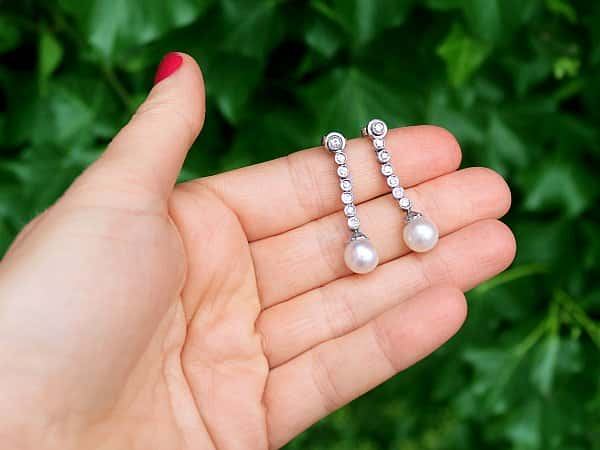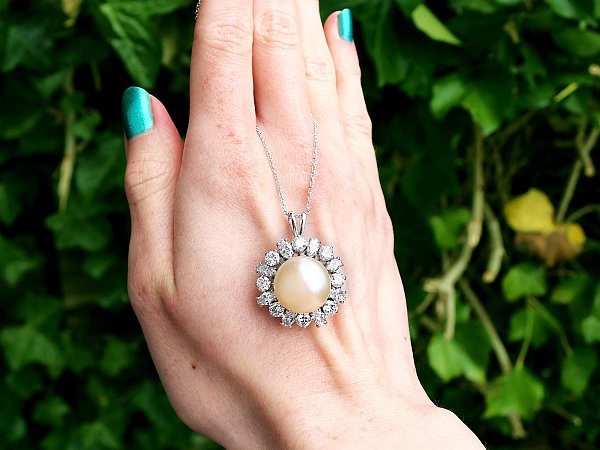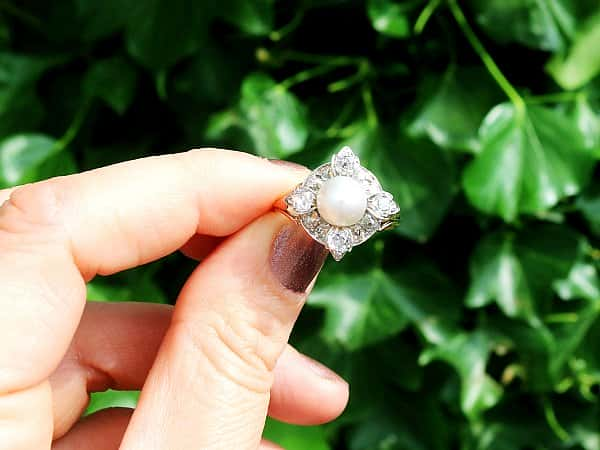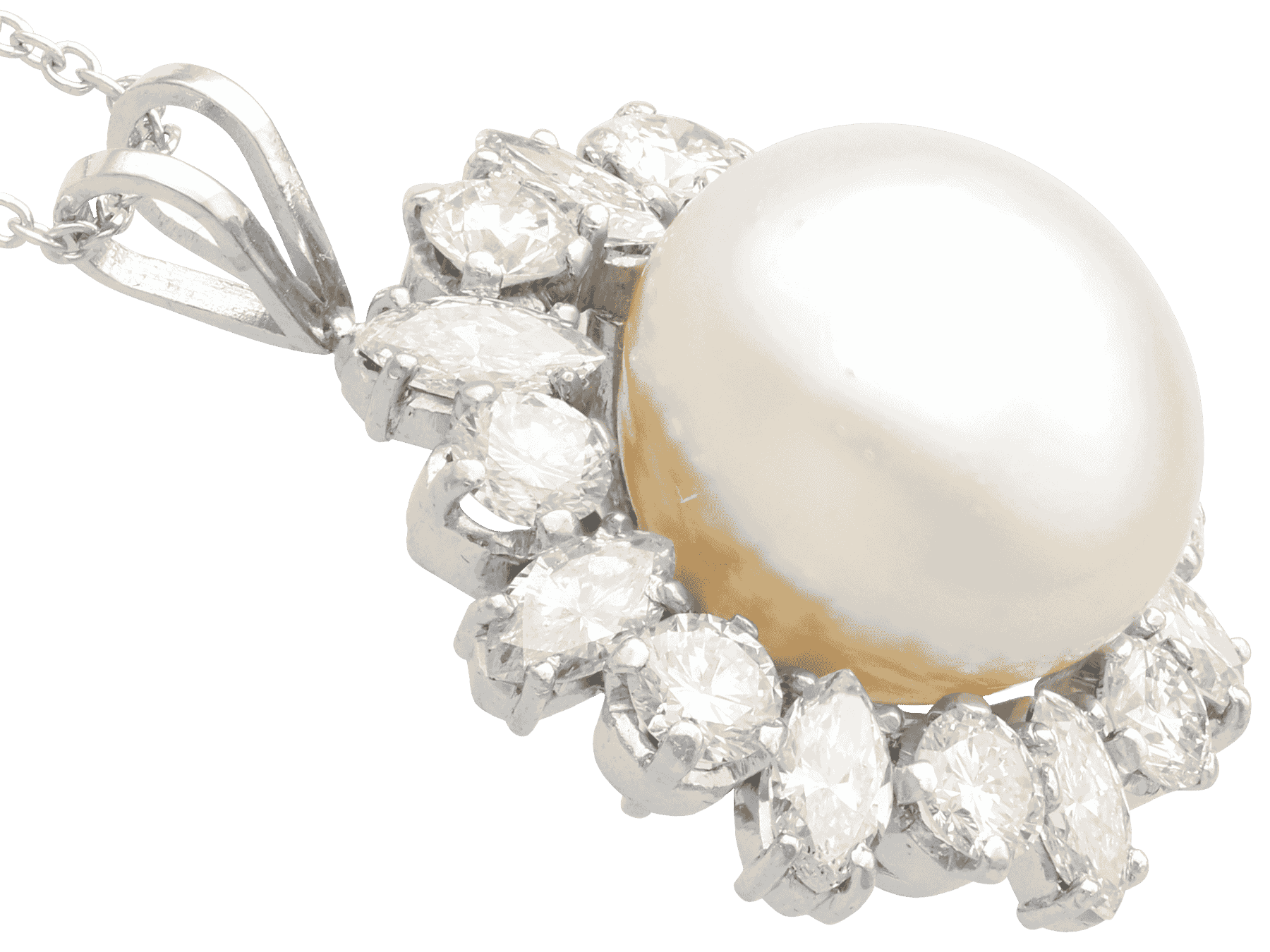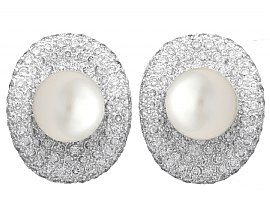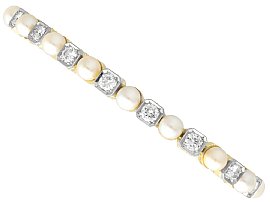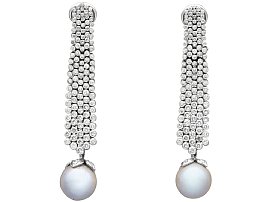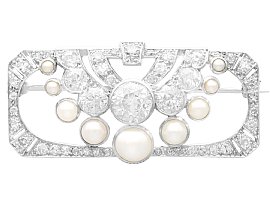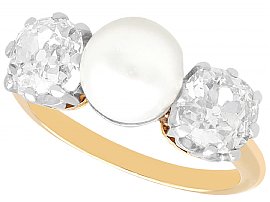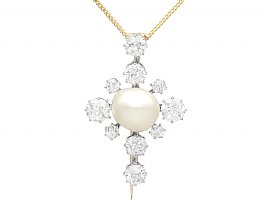History of the Pearl Gemstone
Differing from most other stones used in jewellery making, pearls are an organic gem. This means that instead of being sourced within the earth, they are cultivated within living organisms (namely shellfish: salt water oysters and freshwater mussels).
Although pearls were originally only created through natural means, we now have the capacity to make them ourselves- we call these man-made specimens 'cultured pearls' they rely on human intervention to initiate their growing process. Due to the rarity of naturally sourced pearls, cultured pearls have become the predominant type.
How Pearls are Formed
Despite human intervention, natural and cultured pearls are actually both formed in the same way. The key difference between them however is that with cultured pearls, an irritant is physically added to the mollusc rather than it occurring naturally.
When a small irritant or foreign object is placed into a mollusc (cultured) or accidently (Natural) the Oyster or mussel recognises an intruder. In order to protect itself from this small irritant the mollusc will then secrete a substance called Nacre (also known as mother of pearl).
The History of Pearls
Pearls have traditional connotations with purity, wisdom, beauty and wealth. They were once thought to represent the tears of God and have since been connected with royalty; they are often referred to as the Queen of gems. We can trace pearls so far back in human history that it is difficult to pinpoint their exact origin or attribute the original sale of pearls to one person on place.
We can however, trace pearl trading back 5 or 6 centuries before the Christian era when pearl fisheries spread along the South Indian coast. Divers would risk their lives to retrieve the pearls from the Ocean, a sacrifice undertaken for the beauty and wealth of these rare stones.
The Romans held pearls in very high regard. They were revered stones that were only to be worn by those within the ruling class. As all pearls during this era were naturally and spontaneously created they were of extremely high value. It was even claimed by one Roman historian (Suetonius) that the Roman general Vitellius funded an entire military campaign by selling just one of his mother’s pearl earrings.
Pearls were also linked to ruling classes and royalty in other ancient civilisations: for example fragments of pearl jewellery were found in the sarcophagus of a Persian princess that dates back to 420 BC; and they were also regarded highly in China, where they were a respected choice of gift for Chinese royalty.
Cultured Pearls - Modern Pearls
By the 1800s, overfishing had depleted most of the American oyster populations. Since this time, many natural pearls have been reworked from other older jewellery, such as antique pearl rings, resulting in naturally formed pearls fetching increasingly high prices. Up until the end of the 19th Century therefore (and the advent of cultured pearls), pearls were reserved exclusively for the upper classes.
Today the majority of all pearls are cultured/farmed, a process that was first initiated in the early 1900s: In 1893 Kokichi Mikimoto manually added the irritant to a mollusc producing the first Cultured pearl and his ‘Akoya’ pearls are still used today. His cultured pearls are renowned for their brilliant lustre and rich colours.
There are four major types of cultured whole pearls:
- Akoya-This type is most familiar to many jewellery fanatics. Japan and China both produce saltwater akoya cultured pearls.
- South Sea- Australia, Indonesia, and the Philippines are leading sources of these saltwater cultured pearls.
- Tahitian- Cultivated primarily around the islands of French Polynesia (including Tahiti), these saltwater cultured pearls usually vary from white to black.
- Freshwater- These pearls are usually cultured in freshwater lakes and ponds. They are produced in a wide range of sizes, shapes, and colours. China and the US are the leading sources. (https://www.gia.edu/pearl-description)
Pearl Colours
Pearls can come in a variety of colour depending upon the mollusc they are formed within. The black-lipped oyster of Tahiti for example, produces stunning black Tahitian pearls which are greatly coveted.
The most common colours- and the ones most of us associate with the classic pearl- are cream and white. Pearls tend to have an over tone of pinks and blues, but can also be found in hues of silver, grey and black.
Pearl Treatments
Like most gemstones, pearls can be enhanced to produce a different, more desirable colour. Due to pearls’ porous nature it is very easy to manipulate and change their tone. Of course, any treatments must be disclosed to the customer. You can usually see if a pearl has been treated by looking down drill holes to find original colour, furthermore the dye used on pearls will fade over time.
Pearl Grading
Pearls are graded on various factors. The Gemmological institute of America (GIA) use a comprehensive grading system called The GIA 7 Pearl Value Factors:
- Size
- Colour
- Shape
- Nacre
- Lustre
- Surface
- Matching
Pearl Cleaning and Storing
Pearls need a little extra care and attention. They should be stored in a soft pouch or cloth and kept separate from other jewellery to avoid any abrasions. Pearls are one of the softer stones used in jewellery making and can be very easily scratched.
Be sure to keep pearls away from extreme heats and humidity’s and avoid perfumes or creams coming into direct contact with your pearl; to be on the safe side why not don your pearls last? They will make the perfect finishing touch to your outfit!
